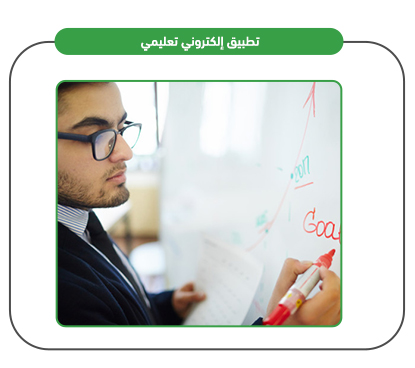Mashroo3k Consulting Company provides a feasibility study for an educational platform project in the Sultanate of Oman, with the highest profit returns and the best payback period, through a series of precise studies on the Omani market size, analysis of local and foreign competitors’ strategies, and offering competitive pricing.

E-learning platforms support the development of the educational process, according to the latest methods of creative and interactive learning and the development of innovative skills, using the most up-to-date methods in the fields of education, publishing, and online entertainment. The educational platform offers online teaching services for primary, intermediate, and secondary school curricula through live online classes delivered by a select group of the best specialized teachers, using modern and engaging methods. Mashroo3k Company provides investors wishing to invest in an educational platform project in the Sultanate of Oman with a set of specialized feasibility studies based on updated databases specific to the Omani market, which helps ensure the success of the project, achieve the highest profit return, and the best payback period. …



Services of the highest quality.
Implementation of certified quality standards.
Application of interactive distance learning methods.
The latest online educational technology.
Management of developmental and marketing ideas to enhance competitive advantages.
Executive summary
Study project services/products
Market Size Analysis
Risk Assessment
Technical study
Financial study
Organizational and administrative study

A Look at E-Commerce Statistics in the GCC Countries:
In 2015, e-commerce contributed approximately 0.4% of the GDP of the GCC countries, amounting to $5.3 billion.
In 2020, with the developments caused by the COVID-19 pandemic on the global economy, the e-commerce market in the GCC became one of the fastest-growing markets worldwide, with a growth rate exceeding 35%. The market size was estimated to be around $24 billion, after earlier forecasts projected it to be $21.6 billion.
Here is a detailed look at the size of the e-commerce market in the GCC countries over the last five years:
Global reports predict that e-commerce in the GCC will continue to grow at a faster pace during the period from 2020 to 2022, with a growth rate of 20%, and at 14% until 2025. Without COVID-19 and its effects, the expected growth rates would have been 14% and 10%, respectively.
The percentage of households purchasing goods online increased from 2% to over 8%. For reference, in developed countries like the United States, South Korea, and Germany, this percentage ranges between 16% and 25%. However, indicators predict that this percentage in the GCC countries will approach global levels.
E-commerce visits to popular shopping sites increased by 50% in 2020 compared to 2015, with the number of users reaching 21 million visitors, up from 3 million.
Recently, e-commerce platforms and applications have tripled in number compared to 2015.
The average time spent by users on shopping websites like Amazon, Namshi, and Noon increased, with users spending 9 to 12 minutes per day on average, visiting 7 to 8 pages.
Food delivery and grocery services are among the fastest-growing e-commerce activities, with a growth rate of 20%. The market for these services today is valued at $3 billion in the GCC.
Fashion and beauty sectors present a significant investment opportunity in this space, with a growth rate of 18%, and the market value has exceeded $5 billion in the GCC.
Here are the expectations for e-commerce market growth in the GCC over the next five years:
60% of millennials shop online.
By 2025, the e-commerce market in the GCC is expected to reach $50 billion.
Millennials represent more than 45% of the population in the GCC, making the e-commerce market a promising one in the region.

E-Commerce Revenue and Usage Trends in Saudi Arabia:
E-commerce revenues are expected to reach USD 8,290 billion in 2024.
In 2019, the number of internet users in Saudi Arabia engaging in e-commerce (buying or selling) reached 23.7 million users, and this number is expected to rise to 33.6 million users, representing an increase of approximately 42%.
Clothing, footwear, and sports goods are the most purchased items online, accounting for 67% of total e-commerce goods. Cosmetics come in second at 25.9%, followed by books and magazines at 24%, and IT services at 16%. The remaining categories share the rest of the percentage.
With the spread of COVID-19, the number of online stores in Saudi Arabia increased by 12.4%, reaching 28,676 stores by the end of the first half of 2020, compared to 25,501 stores in the fourth quarter of 2019.